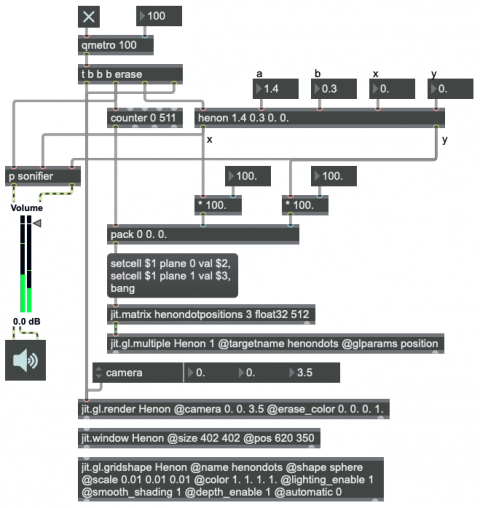Using the Hénon attractor

In order for this example to work correctly, you first need to download the patch called henon.maxpat and place it in the Max file search path.
As explained in the example "Abstraction for calculating the Hénon attractor", the "Hénon attractor" is an iterative function that produces a particular distinctive chaotic pattern of behavior. In this example we use the output of the Hénon attractor to produce a pattern of sounds (clicks passed through a resonant bandpass filter) and shapes (spheres in a 3D space), essentially sonfiying and visualizing the behavior of the function.
For the sonification, each x value provided by the henon abstraction is used to determine the pitch of the note—specifically the center frequency of a reson~ bandpass filter—and the y value is used to determine the panning of the note. For the visualization, the 512 most recent x and y values are stored in a jit.matrix object, and that Jitter matrix is used to provide spatial coordinates to jit.gl.multiple, which manages 512 spheres in the OpenGL world. You can try experimenting with the a and b parameter variables to alter the behavior of henon, and you can change your view of the output by changing the camera position attribute of jit.gl.render.